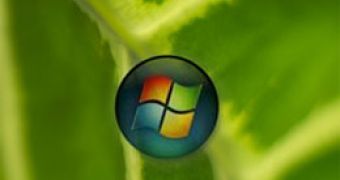I?m five phrases deep into ?The Windows Vista RC1 Monster Review? put together by The NeoSmart Files. The introduction is epic in itself and a prelude to a 12 chapter long Windows Vista advertisement = Microsoft PR.
?Windows Vista RC1 was released this week with great fanfare. Coming after the highly-successful pre-RC1 build 5536, it had quite a lot of high expectations, and it certainly exceeded quite a few of them. In a word, Windows Vista RC1 is too good to be true. If it wasn?t for the pre-RC1 build, we wouldn?t be able to believe it. The last non-RC1 branches build we receive, build 5472, was a mess. It lacked a sense of completion, it crashed, it was buggy, and it was huge. RC1 couldn?t be further from that harsh reality,? reads a fragment of the review.
Well, first off RC1 has been around for quite some time, it was announced on September 1st, 2006 and within a week it was already available for download, but only to the already existing pool of the Customer Preview Program participants. It?s true that the Redmond Company opened the CPP to the general public, but this does not mean that Microsoft released Vista RC1 ?this week?.
And then there?s the highly successful pre-RC1 build 5536, which had apparently generated feverishly high expectations and then some! What?
The 32-bit version ISO file was released by Microsoft to a limited audience, whose availability was disallowed following 100,000 downloads? Ok?
But how is this an argument for the highly coherent conclusion ?in a word, Windows Vista is too good to be true? is beyond me. Are the people hardcore fans or what? I?ll bet they used an intensive arsenal of Vista T-shirts, hats and Bill Gates dolls, while performing this farce of a review. However, NeoSmart Files states that their perspective on the subject at hand is both subjective and objective. And while I applaud their enthusiastic approach, I can?t shake the feeing that this is nothing more than a publicity stunt. Too good to be true just sounds? well, too good to be true?
How do you go from an operating system that is a mess, lacking the sense of completion, crashing, full of bugs and a system resource hog to ?too good to be true?? The review even states ?RC1 is good. Really good for a product that just a month ago was a complete and utter disaster as far as usability and stability were concerned.? They must have received a visit from the magical OS ferry.
This masquerade of a review goes on to draw inept conclusions such as:
?Each and every line of code seems to have been thoroughly cleaned up and heavily scrubbed.
It?s more than just vibes or karma, it?s something that can only be described as the ?completeness? of the entire operating system as a whole.
The new interface is really nice, and far surpasses the rest of Windows Vista in terms of true style and nice effects, not overdone, but great looking nonetheless.?
The code SEEMS cleaned up and scrubbed!? KARMA!? NICE!? And to serve the cherry on the cake the NeoSmart Files calls the Symantec security reports bullshit.
?One of Windows Vista?s biggest improvements and source of problems to date is the all-new networking TCP/IP stack and front-end. Besides the (largely BS) security bulletin published by Symantec, there have been a host of other ?previously neutralized? TCP/IP bugs that still existed in Windows Vista. But since then Vista has come clean. We haven?t been able to replicate any of the vulnerabilities detailed in Symantec?s security bulletins.?
Compare the following excerpt from ?Windows Vista Network Attack Surface Analysis: A Broad Overview? by Tim Newsham1 and Jim Hoagland, Principal Security Researcher, Symantec Corporation: ?We performed our testing by sending out several out-of-order fragments of a UDP packet that contained conflicting data. The fragments were constructed such that the UDP header was sent once unambiguously with hecksums disabled (using the distinguished value of zero). We then observed the payloads of the reassembled packets that were delivered to the application layer on the target machine. All tests were performed using the fragorder.py tool. Fragorder listens for UDP packets o a special test network address and replies with a series of fragments of a UDP packet. he host being tested must be primed by adding a static ARP entry for the bogus test address which points to the MAC address that fragorder.py is running on (i.e. arp ?s 0.200.200.199 00-04-e2-0b-41-21). To test a host, netcat is used to send out a packet to licit a fragment, and the results received by netcat are recorded (i.e. nc ?u 10.200.200.99 999 and hitting the Enter key to initiate each test)? to KARMA and NICE.
Want to get an idea of the tests performed by the NeoSmart Files? Here: ?even Photoshop CS2 loads in under 30 seconds, something that could never be done on these same PCs under XP and run significantly faster than their Linux counterparts like GIMP or Evolution.?
What!!!???
Adobe Photoshop CS2 with less than 100 installed fonts and just the basic plug-ins, loads in under 15 seconds on a AMD Athlon 64 2800+ with 512 RAM. Prerequisite resources to perform the test: Windows XP, Adobe Photoshop CS2 and the ability to count?

 14 DAY TRIAL //
14 DAY TRIAL //